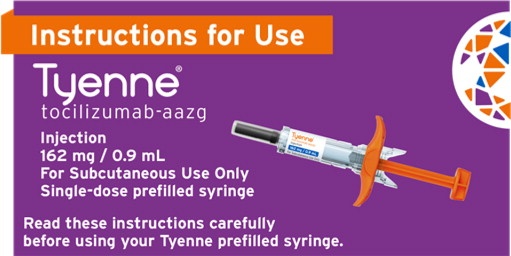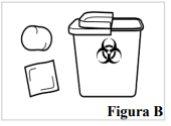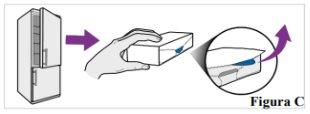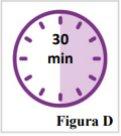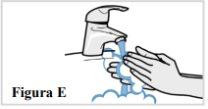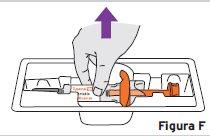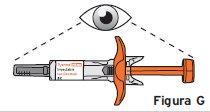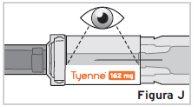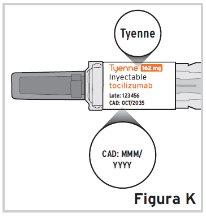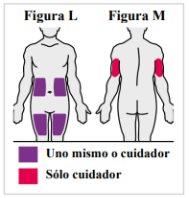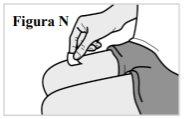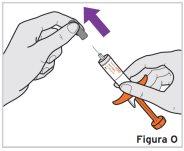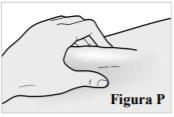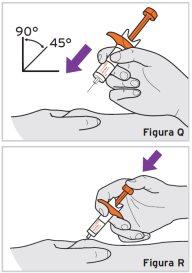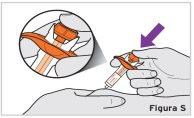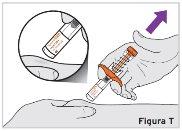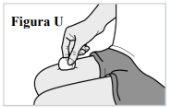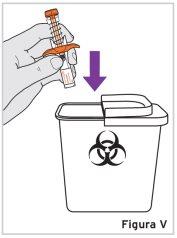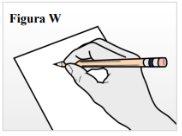
Инструкция по применению ТИЕННЕ 162 мг РАСТВОР ДЛЯ ИНЪЕКЦИЙ В ПРЕДНАПОЛНЕННОМ ШПРИЦЕ
Введение
Инструкция: информация для пользователя
Tyenne 162 мг раствор для инъекций в предварительно заполненном шприце
тоцилизумаб
Это лекарство подлежит дополнительному наблюдению, что ускорит обнаружение новой информации о его безопасности. Вы можете способствовать этому, сообщая о нежелательных реакциях, которые у вас могут возникнуть. В конце раздела 4 содержится информация о том, как сообщать о этих нежелательных реакциях.
Прочитайте внимательно всю инструкцию перед началом использования этого лекарства, поскольку она содержит важную информацию для вас.
- Сохраните эту инструкцию, поскольку вам может потребоваться перечитать ее.
- Если у вас есть какие-либо вопросы, проконсультируйтесь с вашим врачом, фармацевтом или медсестрой.
- Это лекарство было назначено только вам, и его не следует давать другим людям, даже если они имеют те же симптомы, что и вы, поскольку оно может нанести им вред.
- Если вы испытываете нежелательные реакции, проконсультируйтесь с вашим врачом, фармацевтом или медсестрой, даже если это нежелательные реакции, которые не указаны в этой инструкции. См. раздел 4.
Помимо этой инструкции, вам будет дана Карта информации для пациента, содержащая важную информацию о безопасности, которую вы должны знать до начала и во время лечения Tyenne.
Содержание инструкции
- Что такое Tyenne и для чего оно используется
- Что вам нужно знать перед началом использования Tyenne
- Как использовать Tyenne
- Возможные нежелательные реакции
- Хранение Tyenne
- Содержание упаковки и дополнительная информация
1. Что такое Tyenne и для чего оно используется
Tyenne содержит активное вещество под названием тоцилизумаб, которое является белком, полученным из определенных иммунных клеток (моноклональное антитело), блокирующим действие определенного типа белка (цитокина), называемого интерлейкином-6. Этот белок участвует в воспалительных процессах в организме, и блокируя его, можно уменьшить воспаление. Tyenne показан для лечения:
- взрослых с активной ревматоидной артритой (РА) средней и тяжелой степени, которая является аутоиммунным заболеванием, если предыдущие методы лечения не были эффективными.
- взрослых с тяжелой, активной и прогрессирующей ревматоидной артритой (РА), которые не были ранее лечены метотрексатом.
Tyenne помогает уменьшить симптомы РА, такие как боль и отек в суставах, и также может улучшить вашу способность выполнять повседневные задачи. Tyenne показал снижение прогрессирования повреждения суставов и костей, вызванного заболеванием, и улучшение вашей способности выполнять повседневные активности.
Tyenne обычно используется в комбинации с другим препаратом для лечения РА, называемым метотрексатом. Однако Tyenne может быть назначен самостоятельно, если ваш врач определяет, что метотрексат не подходит.
- взрослых с заболеванием артерий, называемым гигантоклеточной артериитом (ГКА), вызванным воспалением крупных артерий организма, особенно тех, которые снабжают кровью голову и шею. Симптомы могут включать головную боль, усталость (утомление) и боль в челюсти. Эффекты могут включать инсульт и слепоту.
Tyenne может уменьшить боль и отек артерий и вен головы, шеи и рук.
ГКА часто лечится препаратами, называемыми стероидами. Обычно они эффективны, но могут иметь побочные эффекты при использовании в высоких дозах в течение длительного времени. Снижение дозы стероидов также может привести к обострению ГКА. Добавление Tyenne к лечению может сделать время использования стероидов короче, при этом контролируя заболевание.
- детей и подростков в возрасте 1 года и старше с активной ювенильной идиопатической системной артритой (ЮИСА), воспалительным заболеванием, вызывающим боль и отек в одном или нескольких суставах, а также лихорадку и кожную сыпь.
Tyenne используется для улучшения симптомов ЮИСА. Он может быть назначен в комбинации с метотрексатом или самостоятельно.
- детей и подростков в возрасте 2 лет и старше с активной ювенильной идиопатической полиартритой (ЮИПА). Это воспалительное заболевание, вызывающее боль и отек в одном или нескольких суставах.
Tyenne используется для улучшения симптомов ЮИПА. Он может быть назначен в комбинации с метотрексатом или самостоятельно.
2. Что вам нужно знать перед началом использования Tyenne
Не используйте Tyenne
- Если вы или ребенок, за которым вы ухаживаете, аллергичны к тоцилизумабу или любому другому компоненту этого препарата (перечисленному в разделе 6).
- Если у вас или ребенка, за которым вы ухаживаете, есть тяжелая активная инфекция.
Если у вас есть одно из этих условий, проконсультируйтесь с врачом. Не используйте Tyenne.
Предостережения и меры предосторожности
Проконсультируйтесь с вашим врачом, фармацевтом или медсестрой перед началом использования Tyenne.
- Если вы испытываете аллергические реакциитакие как чувство сдавления в груди, свистящее дыхание, головокружение или сильное головокружение, отек губ, языка, лица или кожной сыпь, зуд, после или во время инъекции, сообщите об этом вашему врачу немедленно.
- Если вы испытали какие-либо симптомы аллергической реакции после введения Tyenne, не принимайте следующую дозу, пока не проконсультируетесь с вашим врачом и он не скажет вам принять следующую дозу.
- Если у вас есть любая инфекция, будь то кратковременная или длительная, или если вы часто болеете. Немедленно сообщите об этом вашему врачу, если вы чувствуете себя плохо. Tyenne может уменьшить способность вашего организма реагировать на инфекции и может сделать существующую инфекцию хуже или увеличить вероятность получения новой инфекции.
- Если вы имели туберкулез, сообщите об этом вашему врачу. Ваш врач проверит признаки и симптомы туберкулеза перед началом лечения Tyenne. Сообщите об этом вашему врачу немедленно, если симптомы туберкулеза (постоянный кашель, потеря веса, общее недомогание, субфебрилитет) или любая другая инфекция появляются во время или после лечения.
- Если вы имели язву кишечника или дивертикулит, сообщите об этом вашему врачу. Симптомы могут включать боль в животе и необъяснимые изменения в кишечных привычках с лихорадкой.
- Если у вас есть печеночная болезнь, сообщите об этом вашему врачу. Перед использованием Tyenne ваш врач проведет анализ крови для измерения функции печени.
- Если какой-либо пациент был недавно вакцинированили планирует вакцинацию, сообщите об этом вашему врачу. Все пациенты должны быть в курсе своей вакцинации перед началом лечения Tyenne. Определенные типы вакцин не должны вводиться во время лечения Tyenne.
- Если у вас есть рак, сообщите об этом вашему врачу. Ваш врач должен решить, можете ли вы продолжать лечение Tyenne.
- Если у вас есть факторы риска сердечно-сосудистых заболеваний, такие как повышенное артериальное давление и высокие уровни холестерина, сообщите об этом вашему врачу. Эти факторы должны быть контролируемы во время лечения Tyenne.
- Если у вас есть проблемы с почкамисредней и тяжелой степени, ваш врач будет наблюдать за вами.
- Если у вас есть постоянные головные боли.
Ваш врач проведет анализ крови перед тем, как вы начнете принимать Tyenne, чтобы определить, есть ли у вас низкий уровень белых кровяных клеток, низкий уровень тромбоцитов или повышение печеночных ферментов.
Дети и подростки
Не рекомендуется введение Tyenne в предварительно заполненном шприце под кожу у детей младше 1 года.
Tyenne не должен быть назначен детям с ЮИСА (ювенильной идиопатической системной артритой) с весом менее 10 кг.
Если ребенок имеет историю синдрома активации макрофагов(активация и неконтролируемое размножение определенных кровяных клеток), сообщите об этом вашему врачу. Ваш врач должен решить, можно ли все еще назначать Tyenne.
Другие лекарства и Tyenne
Сообщите вашему врачу, если вы принимаете любое другое лекарство или недавно принимали его. Это связано с тем, что Tyenne может повлиять на то, как работают некоторые лекарства, и может потребоваться коррекция дозы. Сообщите вашему врачу, если вы недавно использовали лекарства, содержащие любое из этих активных веществ:
- метилпреднизолон, дексаметазон, используемые для уменьшения воспаления,
- симвастатин или аторвастатин, используемые для уменьшения уровня холестерина,
- антагонисты кальциевых каналов (например, амлодипин), используемые для лечения повышенного артериального давления,
- теофиллин, используемый для лечения астмы,
- варфарин или фенпрокумон, используемые как антикоагулянты,
- фенитоин, используемый для лечения судорог,
- циклоспорин, используемый при трансплантации органов как иммунодепрессант,
- бензодиазепины (например, темазепам), используемые для успокоения тревоги.
Что касается вакцин, см. раздел предостережений выше.
Поскольку нет клинического опыта, не рекомендуется использовать Tyenne с другими биологическими препаратами, используемыми для лечения РА, ЮИСА, ЮИПА или ГКА.
Беременность и лактация
Tyenne не должен использоваться во время беременности, если это не абсолютно необходимо. Поговорите с вашим врачом, если вы беременны, думаете, что можете быть беременной, или планируете стать беременной.
Женщины детородного возраста должны использовать эффективные методы контрацепции во время и до 3 месяцев после окончания лечения.
Прекратите кормление грудью, если начинаете лечение Tyenne, и проконсультируйтесь с вашим врачом. Перед повторным кормлением грудью должно пройти не менее 3 месяцев с момента последнего лечения Tyenne. Неизвестно, передается ли Tyenne в грудное молоко.
Вождение и использование машин
Это лекарство может вызывать головокружение, если вы чувствуете себя головокружительно, не водите машину и не используйте машины.
Tyenne содержит натрий
Это лекарство содержит менее 23 мг натрия (1 ммоль) на дозу 0,9 мл, то есть практически "не содержит натрия".
3. Как использовать Tyenne
Следуйте точно инструкциям по введению этого лекарства, указанным вашим врачом, фармацевтом или медсестрой. В случае сомнений проконсультируйтесь с вашим врачом, фармацевтом или медсестрой.
Лечение должно быть начато медицинским специалистом с опытом в диагностике и лечении РА, ЮИСА, ЮИПА или ГКА.
Взрослые с РА или ГКА
Рекомендуемая дозадля взрослых с РА (ревматоидной артритой) и ГКА (гигантоклеточным артериитом) составляет 162 мг (содержимое предварительно заполненного шприца) один раз в неделю.
Дети и подростки с ЮИСА (в возрасте 1 года и старше)
Обычная доза Tyenne зависит от веса пациента.
- Если пациент весит менее 30 кг: доза составляет 162 мг (содержимое 1 предварительно заполненного шприца) один раз каждые 2 недели.
- Если пациент весит 30 кг или более: доза составляет 162 мг (содержимое 1 предварительно заполненного шприца) один раз в неделю.
Дети и подростки с ЮИПА (в возрасте 2 лет и старше)
Обычная доза Tyenne зависит от веса пациента.
- Если пациент весит менее 30 кг: доза составляет 162 мг (содержимое 1 предварительно заполненного шприца) один раз каждые 3 недели.
- Если пациент весит 30 кг или более: доза составляет 162 мг (содержимое 1 предварительно заполненного шприца) один раз каждые 2 недели.
Tyenne вводится путем инъекции под кожу (субкутaneously). Вначале ваш врач или медсестра могут вводить вам Tyenne. Однако ваш врач может решить, что вы сами можете вводить Tyenne. В этом случае вы получите информацию о том, как самостоятельно вводить Tyenne. Родители и опекуны получат инструкции о том, как вводить Tyenne детям, которые не могут сделать это самостоятельно, таким как дети.
Поговорите с вашим врачом, если у вас есть вопросы о том, как вводить инъекцию или ребенку, за которым вы ухаживаете. В конце этой инструкции вы найдете подробные "инструкции по введению".
Если вы используете больше Tyenne, чем должно быть
Поскольку Tyenne вводится в предварительно заполненном шприце, маловероятно, что вам будет введено слишком много. Однако, если вас это беспокоит, поговорите с вашим врачом, фармацевтом или медсестрой.
Если взрослый с РА и ГКА или ребенок или подросток с ЮИСА пропустил или забыл дозу, очень важно использовать Tyenne точно так, как назначил ваш врач. Следите за своей следующей дозой.
- Если вы забыли свою еженедельную дозу в течение 7 дней, примите дозу в следующий запланированный день.
- Если вы забыли свою дозу каждые 2 недели в течение 7 дней, введите дозу как можно скорее и введение следующей дозы по вашему исходному графику.
- Если вы забыли свою дозу более 7 дней или не уверены, когда вводить Tyenne, позвоните вашему врачу или фармацевту.
Если ребенок или подросток с ЮИПА пропустил или забыл дозу
Очень важно использовать Tyenne точно так, как назначил ваш врач. Следите за своей следующей дозой.
- Если вы забыли дозу в течение 7 дней, введите дозу как можно скорее и введение следующей дозы по вашему исходному графику.
- Если вы забыли дозу более 7 дней или не уверены, когда вводить Tyenne, позвоните вашему врачу или фармацевту.
Если вы прекратите лечение Tyenne
Не должны прекратить лечение Tyenne без предварительной консультации с вашим врачом.
Если у вас есть какие-либо другие вопросы о использовании этого лекарства, спросите вашего врача, фармацевта или медсестру.
4. Возможные нежелательные реакции
Как и все лекарства, Tyenne может вызывать нежелательные реакции, хотя не все люди испытывают их. Нежелательные реакции могут возникать до 3 месяцев после последней дозы Tyenne.
Возможные тяжелые нежелательные реакции: проконсультируйтесь с вашим врачом немедленно.
Это часто встречается: Может повлиять до 1 из 10 человек
Аллергические реакцииво время или после инъекции:
- затруднение дыхания, чувство сдавления в груди или головокружение,
- кожная сыпь, зуд, отек губ, языка или лица.
Если вы испытываете любой из этих симптомов, поговорите с вашим врачом немедленно.
Признаки тяжелых инфекций:
- лихорадка и озноб,
- пузырьки в полости рта или на коже,
- боль в животе.
Признаки и симптомы токсичности печени:
Может повлиять до 1 из 1000 человек
- усталость,
- боль в животе,
- желтуха (желтый цвет кожи или глаз).
Если вы заметили любой из этих симптомов, сообщите об этом вашему врачу как можно скорее.
Частые нежелательные реакции:
Может повлиять более 1 из 10 человек
- инфекции верхних дыхательных путей, с типичными симптомами, такими как кашель, заложенность носа, насморк, боль в горле и головная боль,
- высокие уровни жира в крови (холестерин),
- реакции в месте инъекции.
Нежелательные реакции:
Может повлиять до 1 из 10 человек
- инфекция легких (пневмония),
- герпес (герпес зостер),
- лихорадка (герпес простой), пузырьки,
- инфекции кожи (целлюлит), иногда с лихорадкой и ознобом,
- кожная сыпь и зуд, крапивница,
- аллергические реакции (чувствительность),
- инфекция глаз (конъюнктивит),
- головная боль, головокружение, гипертония,
- язвы в полости рта, боль в животе,
- задержка жидкости (отек) в нижней части ног, увеличение веса,
- кашель, одышка,
- низкие показатели белых кровяных клеток в анализе крови (нейтропения, лейкопения),
- изменения функции печени (повышение трансаминаз),
- повышение билирубина в крови,
- низкие уровни фибриногена в крови (белка, участвующего в свертывании крови).
Редкие нежелательные реакции:
Может повлиять до 1 из 100 человек
- дивертикулит (лихорадка, тошнота, диарея, запор, боль в животе),
- отеки и покраснения в полости рта,
- высокие уровни жира в крови (триглицериды),
- язвы желудка,
- камни в почках,
- гипотиреоз.
Очень редкие нежелательные реакции:
Может повлиять до 1 из 1000 человек
- Синдром Стивенса-Джонсона (кожная сыпь, которая может привести к образованию пузырей и сильному отшелушиванию кожи),
- Смертельные аллергические реакции (анафилаксия),
- воспаление печени (гепатит), желтуха.
Очень редкие нежелательные реакции:
Может повлиять до 1 из 10 000 человек
- низкие показатели белых кровяных клеток, красных кровяных клеток и тромбоцитов в анализе крови,
- прекращение функции печени.
Дополнительные нежелательные реакции у детей и подростков с ЮИСА или ЮИПА
У детей и подростков с ЮИСА или ЮИПА нежелательные реакции в целом подобны таковым у взрослых. Некоторые нежелательные реакции встречаются чаще у детей и подростков: воспаление носа и горла, головная боль, тошнота и снижение показателей белых кровяных клеток.
Сообщение о нежелательных реакциях
Если вы испытываете любой тип нежелательной реакции, проконсультируйтесь с вашим врачом, фармацевтом или медсестрой, даже если это возможные нежелательные реакции, которые не указаны в этой инструкции. Вы также можете сообщить об этом напрямую через национальную систему уведомления, указанную в Приложении V. Сообщая о нежелательных реакциях, вы можете способствовать предоставлению более полной информации о безопасности этого лекарства.
5. Хранение Тиенна
Храните это лекарство в недоступном для детей месте.
Не используйте это лекарство после даты истечения срока годности, указанной на этикетке предзаполненного шприца и на коробке после (CAD). Дата истечения срока годности - последний день указанного месяца.
Хранить в холодильнике (при температуре от 2 ºC до 8 ºC). Не замораживать.
Храните предзаполненные шприцы в наружной упаковке, чтобы защитить от света.
Один предзаполненный шприц можно хранить при температуре до 25 ºC в течение одного периода до 14 дней. Предзаполненный шприц должен быть защищен от света и выброшен, если не используется в течение 14 дней.
Не используйте это лекарство, если заметите, что оно мутное или содержит частицы, имеет цвет, отличный от бесцветного или светло-желтого, или если часть предзаполненного шприца повреждена.
Не встряхивайте шприц.
После удаления колпачка иглы инъекцию следует начать немедленно, чтобы избежать высыхания лекарства и блокировки иглы. Если предзаполненный шприц не используется сразу после удаления колпачка, его следует утилизировать в контейнере для острых предметов и использовать новый предзаполненный шприц.
Если после введения иглы нельзя нажать на поршень шприца, предзаполненный шприц следует утилизировать в специальном контейнере для острых предметов и использовать новый.
6. Содержимое упаковки и дополнительная информация
Состав Тienne
- Активное вещество - тоцилизумаб
Каждая предварительно заполненная шприц-инъектор содержит 162 мг тоцилизумаба в 0,9 мл.
- Другие компоненты - L-аргинин, L-гистидин, молочная кислота, хлорид натрия, полисорбат 80, соляная кислота (E507) и/или гидроксид натрия (E524), вода для инъекций.
Внешний вид продукта и содержимое упаковки
Тienne - раствор для инъекций. Раствор прозрачный и бесцветный или светло-желтый.
Тienne поставляется в предварительно заполненных шприц-инъекторах объемом 0,9 мл, содержащих 162 мг тоцилизумаба в растворе для инъекций.
Каждая упаковка содержит 1, 4 или 12 предварительно заполненных шприц-инъекторов. Возможно, что будут продаваться только некоторые размеры упаковок.
Владелец разрешения на маркетинг и производитель
Fresenius Kabi Deutschland GmbH
Else-Kroener-Strasse 1
61352 Бад Хомбург в.д.Хёэ
Германия
Производитель
Fresenius Kabi Austria GmbH
Хафнерштрассе 36
8055 Грац
Австрия
Дата последнего пересмотра этого листка-вкладыша:февраль 2024
Другие источники информации
Подробная информация о этом лекарственном средстве доступна на сайте Европейского агентства по лекарственным средствам http://www.ema.europa.eu/.
- Инструкции по применению
Внимательно прочитайте эти инструкции по применению перед использованием шприц-инъектора Тienne и каждый раз, когда получаете новый.
Важная информация
- Прочитайте листок-вкладыш для пациента, который включает шприц-инъектор Тienne, чтобы получить самую важную информацию, которую вам нужно знать перед его использованием.
- Прежде чем использовать шприц-инъектор Тienne впервые, убедитесь, что ваш врач показал вам или вашему опекуну правильный способ его использования. Имейте в виду, что шприц-инъектор поставляется в открытой пластиковой лотке.
- Слепые или имеющие проблемы со зрением люди не должны использовать шприц-инъектор Тienne без помощи обученного человека.
- Поговорите с вашим врачом, если у вас есть какие-либо вопросы или сомнения.
Хранение шприц-инъектора Тienne
- Храните шприц-инъектор в оригинальной упаковке в холодильнике при температуре от 2 °C до 8 °C.
- Храните шприц-инъектор в оригинальной упаковке, чтобы защитить его от света.
- Храните шприц-инъектор вне досягаемости и виду детей.
Незамораживайте Тienne.
Неиспользуйте шприц-инъектор Тienne, который был заморожен или подвергался прямому солнечному свету, поскольку это может вызвать заболевания.
Использование шприц-инъектора Тienne
- Всегда вводите Тienne, используя технику, которую научил ваш врач.
- Шприц-инъектор Тienne предназначен для одноразового использования.
Неделитесь шприц-инъектором Тienne с другим человеком. Вы можете заразить другого человека инфекцией или заразиться ею сами.
- Шприц-инъектор Тienne имеет прозрачный защитный чехол, который покрывает иглу после окончания инъекции.
Неиспользуйте шприц-инъектор, если коробка открыта или повреждена.
Неиспользуйте шприц-инъектор, если он упал на твердую поверхность.
Шприц-инъектор может быть сломан, даже если вы не видите повреждения.
Неснимайте защитный чехол с иглы шприц-инъектора до тех пор, пока не будете готовы сделать инъекцию.
Непытайтесь повторно использовать шприц-инъектор, поскольку это может вызвать инфекцию.
Путешествие с шприц-инъектором Тienne
- Если необходимо, например, когда вы путешествуете, шприц-инъектор Тienne можно хранить при комнатной температуре от 20 °C до 25 °C в течение максимум 14 дней.
- Утилизируйте (выбросьте) продукт, который был хранен при комнатной температуре от 20 °C до 25 °C и не был использован в течение 14 дней.
- Когда вы путешествуете на самолете, всегда консультируйтесь с авиакомпанией и вашим врачом о возможности взять с собой инъекционные лекарства. Всегда носите Тienne в ручной клади, поскольку багажное отделение самолета может быть очень холодным и Тienne может замерзнуть.
Части шприц-инъектора Тienne
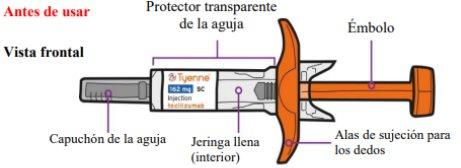
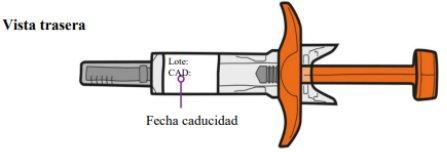

Непытайтесь активировать прозрачный защитный чехол иглы до инъекции.
ШАГ 1: Подготовьте свою инъекцию | |
1.1. Подготовьте плоскую и чистую поверхность, такую как стол или прилавок, в хорошо освещенной области. 1.2. Необходимые материалы (Фигура Б):
|
|
1.3. Выньте коробку Тienne из холодильника и откройте ее (Фигура В). |
|
1.4. Выньте пластиковую лотку Тienne из коробки:
и чистую. | |
1.5. Оставьте шприц-инъектор в пластиковой лотке при комнатной температуре не менее 30 минут перед использованием, чтобы лекарство достигло комнатной температуры (фигура D). Введение холодного лекарства может сделать инъекцию неудобной и затруднить введение поршня. Не нагревайте шприц-инъектор каким-либо другим способом, таким как в микроволновой печи, горячей воде или прямом солнечном свете. Не снимайте защитный чехол иглы, пока шприц-инъектор Тienne достигает комнатной температуры. |
|
1.6. Подготовьте и проверьте свои записи о предыдущих местах инъекций. Это поможет вам выбрать подходящее место для инъекции для этой инъекции (см. ШАГ 8: Запишите свою инъекцию). | |
ШАГ 2: Мойте руки 2.1. Мойте руки с водой и мылом и хорошо вытирайте их чистым полотенцем (Фигура Е). |
|
ШАГ 3: Проверьте шприц-инъектор
|
|
Не берите шприц-инъектор за поршень или за защитный чехол иглы. Если вы это сделаете, вы можете повредить шприц-инъектор или активировать прозрачный защитный чехол иглы. 3.1. Проверьте шприц-инъектор, чтобы убедиться:
|
|
|
|
Неиспользуйте шприц-инъектор, если он показывает какие-либо признаки повреждения. Если это так, свяжитесь с вашим врачом или фармацевтом и утилизируйте шприц-инъектор в контейнере для острых предметов (см. ШАГ 7: Утилизируйте свой шприц-инъектор). |
|
3.2. Проверьте жидкость через прозрачный защитный чехол иглы, чтобы убедиться: | |
Неиспользуйте шприц-инъектор, если жидкость мутная, измененного цвета, содержит частицы или хлопья или показывает какие-либо признаки ухудшения. Если жидкость мутная, измененного цвета, содержит частицы или хлопья, немедленно свяжитесь с вашим врачом или фармацевтом и утилизируйте шприц-инъектор в контейнере для острых предметов (см. ШАГ 7: Утилизируйте свой шприц-инъектор). |
|
3.3. Проверьте этикетку, чтобы убедиться:
Неиспользуйте шприц-инъектор, если:
Если на этикетке не указано Тienne или прошел срок годности, немедленно свяжитесь с вашим врачом или фармацевтом и утилизируйте шприц-инъектор в контейнере для острых предметов (см. ШАГ 7: Утилизируйте свой шприц-инъектор). |
|
ШАГ 4: Выберите место инъекции | |
4.1. Выберите место инъекции (Фигура Л):
Непытайтесь использовать область верхней части руки самостоятельно. Вводите только в указанные места. |
|
4.2. Выберите другое место (не менее 3 см от последнего места инъекции) каждый раз, чтобы уменьшить покраснение, раздражение или другие проблемы с кожей. Невводите в область, которая болезненна (чувствительна), с синяками, покраснением, затвердеванием, рубцами или где есть растяжки, родинки или татуировки. Если у вас есть псориаз, невводите в любую пораженную область или красную, утолщенную, приподнятую или чешуйчатую область. | |
ШАГ 5: Очистите место инъекции 5.1. Очистите кожу в месте инъекции салфеткой, пропитанной спиртом, с круговыми движениями (Фигура Н). Дайте коже высохнуть перед инъекцией. Недуйте и нетрогайте место инъекции после очистки. |
|
ШАГ 6: Примените инъекцию 6.1. Удалите защитный чехол иглы
Недержите поршень, пока удаляете колпачок иглы. Если вы не можете удалить колпачок иглы, попросите помощи у опекуна или свяжитесь с вашим врачом.
Возможно, вы увидите капли жидкости на кончике иглы. Это нормально и не повлияет на вашу дозу. Нетрогайте иглу и непозволяйте ей касаться любой поверхности после удаления колпачка иглы, поскольку вы можете случайно уколоться иглой. |
|
| |
6.2. Сожмите кожу
6.3. Введите иглу Держите шприц-инъектор, как если бы вы держали ручку. |
|
| |
Важно использовать правильный угол, чтобы обеспечить введение лекарства под кожу (в жировую ткань); в противном случае инъекция может быть болезненной, и лекарство может не подействовать. 6.4. Введите
Неудаляйте иглу из кожи, когда поршень полностью нажат. | |
| |
6.5. Завершите инъекцию
Система безопасности удалит иглу из кожи и покроет иглу (Фигура Т).
Важно:Немедленно свяжитесь с вашим врачом, если:
Введение неправильного количества лекарства может повлиять на ваше лечение. Неповторно используйте шприц-инъектор, даже если не все лекарство было введено. Непытайтесь снова закрыть иглу, поскольку вы можете уколоться. |
|
6.6. После инъекции Если есть кровь или жидкость в месте инъекции, осторожно нажмите ватный шарик или марлю на кожу (Фигура У). Вы можете использовать адгезивную повязку, если необходимо. Нетрите место инъекции. |
|
ШАГ 7: Утилизируйте свой шприц-инъектор 7.1. Утилизируйте использованный шприц-инъектор в контейнере для острых предметов сразу после использования (Фигура В). | |
Если у вас нет контейнера для острых предметов, вы можете использовать домашний контейнер, который:
Когда ваш контейнер для острых предметов почти заполнен, вам необходимо следовать местным рекомендациям по правильной утилизации контейнера. Невыбрасывайте использованные шприц-инъекторы в домашний мусор. Невыбрасывайте использованные контейнеры для острых предметов в домашний мусор, если только местные правила не разрешают этого. Неперерабатывайте использованные контейнеры для острых предметов. |
|
Держите шприц-инъекторы Тienne и контейнер для отходов вне досягаемости и виду детей. | |
ШАГ 8: Запишите свою инъекцию 8.1. Чтобы помочь вам вспомнить, когда и где вам нужно сделать следующую инъекцию, запишите дату, время и конкретную часть тела, где вы сделали инъекцию (Фигура W). Также может быть полезно записать любые вопросы или сомнения об инъекции, чтобы вы могли задать их вашему врачу. |
|
Если у вас есть вопросы или сомнения о шприц-инъекторе Тienne, свяжитесь с вашим врачом, знакомым с Тienne. |
- Страна регистрации
- Активное вещество
- Требуется рецептДа
- Производитель
- Информация носит справочный характер и не является медицинской рекомендацией. Перед приемом любых препаратов проконсультируйтесь с врачом. Oladoctor не несет ответственности за медицинские решения, принятые на основе этого контента.
- Аналоги ТИЕННЕ 162 мг РАСТВОР ДЛЯ ИНЪЕКЦИЙ В ПРЕДНАПОЛНЕННОМ ШПРИЦЕФорма выпуска: ИНЪЕКЦИОННЫЙ РАСТВОР, 162 мгАктивное вещество: ТоцилизумабПроизводитель: Celltrion Healthcare Hungary Kft.Требуется рецептФорма выпуска: ИНЪЕКЦИОННЫЙ РАСТВОР, 162 мгАктивное вещество: ТоцилизумабПроизводитель: Celltrion Healthcare Hungary Kft.Требуется рецептФорма выпуска: ИНЪЕКЦИОННЫЙ РАСТВОР ДЛЯ ИНФУЗИЙ, 20 мг/млАктивное вещество: ТоцилизумабПроизводитель: Celltrion Healthcare Hungary Kft.Требуется рецепт
Аналоги ТИЕННЕ 162 мг РАСТВОР ДЛЯ ИНЪЕКЦИЙ В ПРЕДНАПОЛНЕННОМ ШПРИЦЕ в других странах
Лучшие аналоги с тем же действующим веществом и терапевтическим эффектом.
Аналог ТИЕННЕ 162 мг РАСТВОР ДЛЯ ИНЪЕКЦИЙ В ПРЕДНАПОЛНЕННОМ ШПРИЦЕ в Україна
Врачи онлайн по ТИЕННЕ 162 мг РАСТВОР ДЛЯ ИНЪЕКЦИЙ В ПРЕДНАПОЛНЕННОМ ШПРИЦЕ
Консультация по дозировке, побочным эффектам, взаимодействиям, противопоказаниям и продлению рецепта на ТИЕННЕ 162 мг РАСТВОР ДЛЯ ИНЪЕКЦИЙ В ПРЕДНАПОЛНЕННОМ ШПРИЦЕ – по решению врача и с учетом местных правил.



